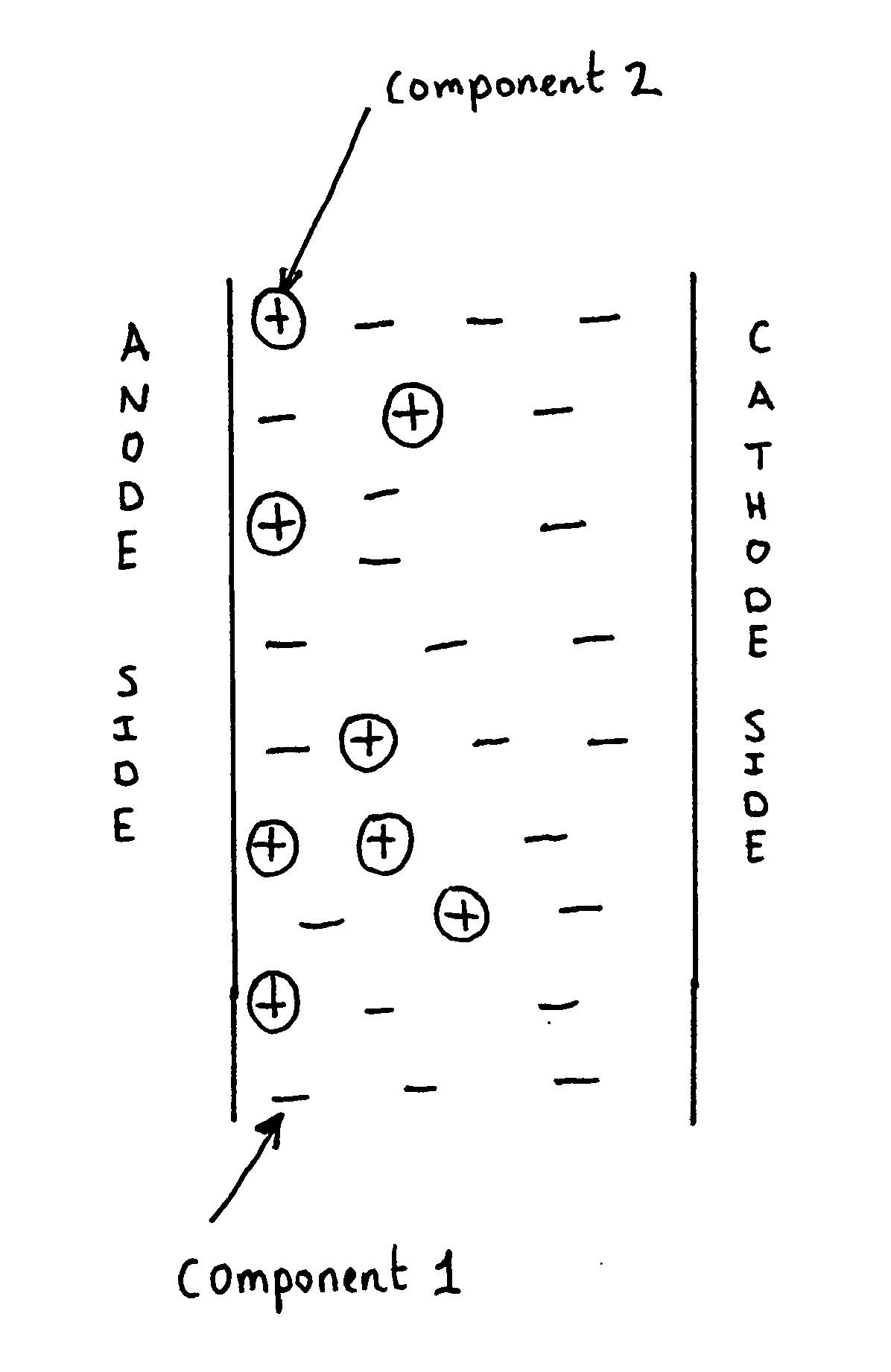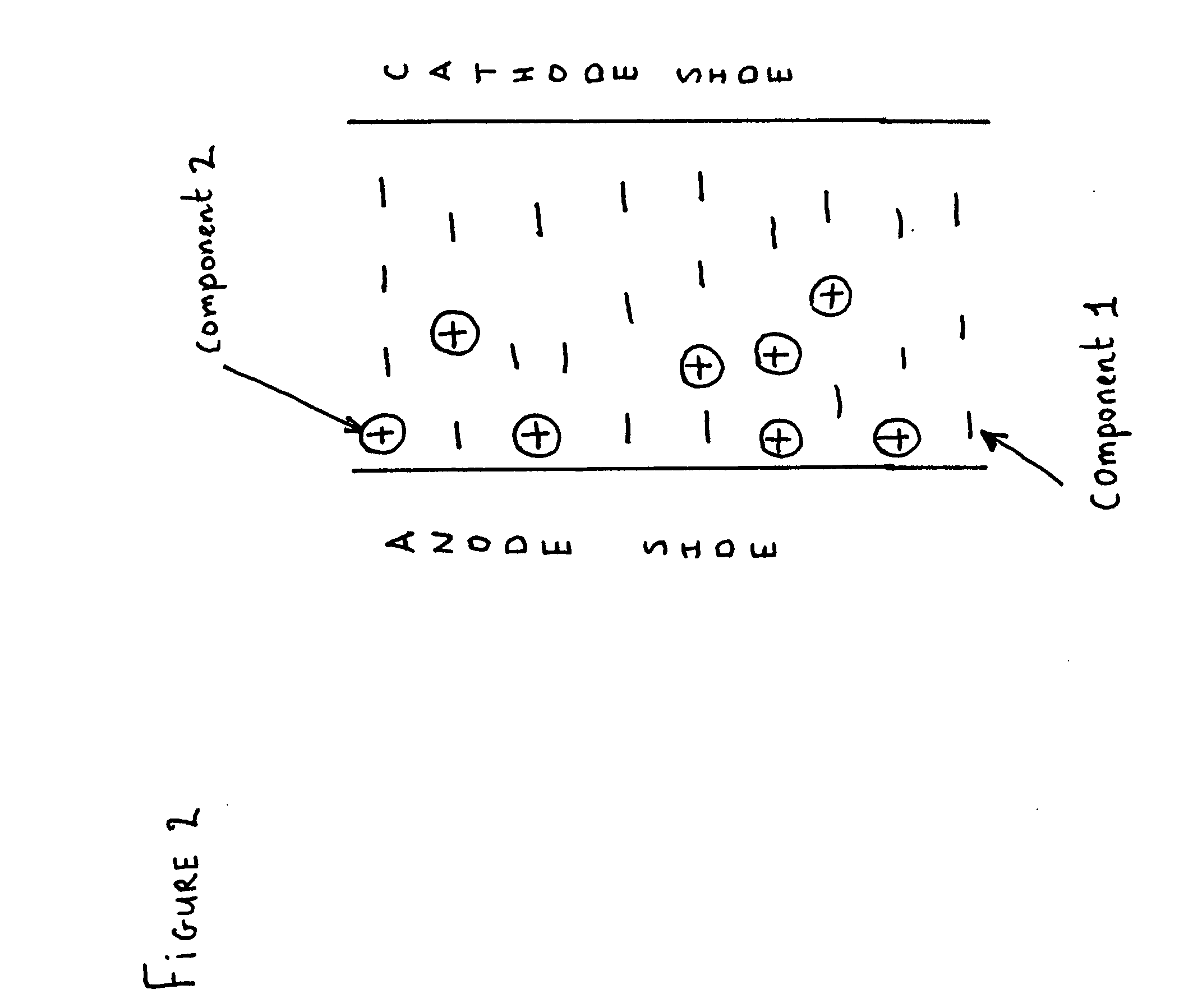Polymer catalyst composite as a membrane electrode assembly in Direct Methanol Fuel Cells
a technology of membrane electrodes and catalysts, which is applied in the field of membrane electrode assemblies in fuel cells, can solve the problems of reducing affecting the commercialization of dmfc, and affecting the overall efficiency of the system, so as to reduce the crossover of methanol and achieve low power density
- Summary
- Abstract
- Description
- Claims
- Application Information
AI Technical Summary
Benefits of technology
Problems solved by technology
Method used
Image
Examples
Embodiment Construction
[0014] This invention provides an elegant design of a polymer-catalyst composite that will function as a Membrane-Electrode Assembly (MEA) in a Direct Methanol Fuel Cell (DMFC). The advantage of the invention is that it will eliminate or at least significantly reduces, the water and methanol crossover problems in state-of-the-art DMFCs. The design of the polymer-catalyst composite employs two components: component 1, which is a conductive electro-active polymer (CEP), and component 2, which is a heteropolyanion, a polyoxometalate, or a polyelectrolyte. Both components have multi-functional usage within the MEA.
Component 1
[0015] Component 1 (CEP) functions as catalyst support and provides electronic and ionic (H+ion) conduction while improving the charge transfer kinetics for the electrons and the protons within the anode. The CEP further acts as an ion-exchange media for assisting ion (proton) transfer from the anode to the cathode side.
[0016] Component 1 could include conductin...
PUM
| Property | Measurement | Unit |
|---|---|---|
| dielectric constant | aaaaa | aaaaa |
| conductive | aaaaa | aaaaa |
| conductive electro-active | aaaaa | aaaaa |
Abstract
Description
Claims
Application Information
 Login to View More
Login to View More - R&D
- Intellectual Property
- Life Sciences
- Materials
- Tech Scout
- Unparalleled Data Quality
- Higher Quality Content
- 60% Fewer Hallucinations
Browse by: Latest US Patents, China's latest patents, Technical Efficacy Thesaurus, Application Domain, Technology Topic, Popular Technical Reports.
© 2025 PatSnap. All rights reserved.Legal|Privacy policy|Modern Slavery Act Transparency Statement|Sitemap|About US| Contact US: help@patsnap.com



